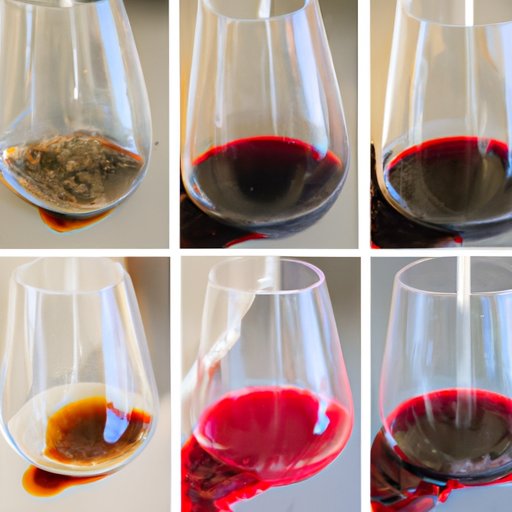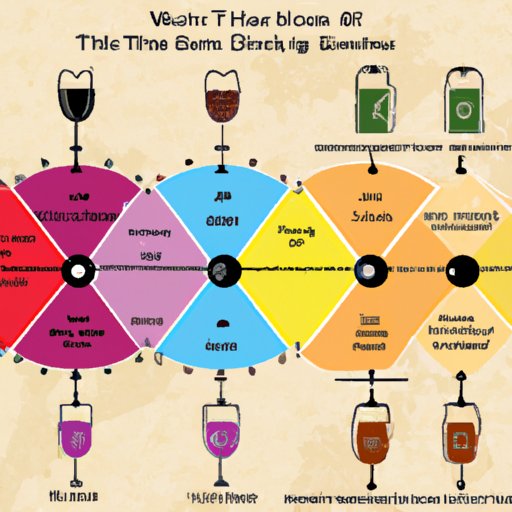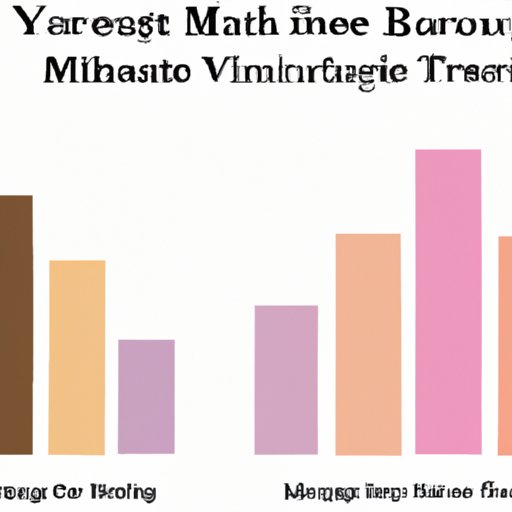Introduction
Winemaking is the art and science of transforming grapes into a delicious beverage. The term “winemaking” refers to the entire process from harvesting grapes to bottling the final product. It’s an incredibly intricate and complex process that requires patience, knowledge, and skill. But just how long does it take to make wine?
In this article, we will explore the different stages of wine production and how long each step takes. We will also look at the timeline for making wine from harvest to bottle. Additionally, we will examine the various factors that can influence the length of time needed to make wine and compare winemaking processes around the world. Lastly, we will discuss the impact of aging on the duration of the winemaking process.

Exploring the Different Stages of Wine Production and How Long Each Step Takes
The journey of winemaking begins with harvesting grapes. This is typically done by hand or machine depending on the size of the vineyard. Hand-harvesting usually takes two to three weeks while machine harvesting can be completed in a matter of days. Once the grapes are harvested, they are then transported to the winery where they are sorted and destemmed.
The next step is fermentation, which is the conversion of sugar molecules into alcohol. Fermentation generally takes between one and four weeks but can vary depending on the type of wine being made. After fermentation, the wine is pressed to separate the solids (i.e., skins, seeds, and stems) from the liquid.
The pressing process typically requires one to two days. Following pressing, the wine undergoes clarification to remove any remaining solids. Clarification can take anywhere from several days to several weeks depending on the desired clarity of the wine.
Once the wine has been clarified, it is blended to achieve the desired flavor profile. Blending usually takes a few days to a few weeks. Lastly, the wine is bottled, labeled, and packaged for sale. This process can take up to a day.
A Breakdown of the Timeline for Making Wine from Harvest to Bottle
So, how long does it take to make wine? On average, it takes six to nine months for the entire winemaking process from harvest to bottle. However, this timeline can vary significantly depending on the type of wine being made. For example, sparkling wines require additional steps such as secondary fermentation and extended aging, which can add a few months or even a year or more to the total time required.
Estimating the Total Time Required
To estimate the total time needed to make wine, you must consider the time it takes for each stage of the winemaking process. As mentioned earlier, harvesting typically takes two to three weeks, fermentation one to four weeks, pressing one to two days, clarification several days to several weeks, blending a few days to a few weeks, and bottling up to a day. Taking all of these steps into account, it can take six to nine months for the entire process from harvest to bottle.
Examining Factors that Affect the Length of Time Needed to Make Wine
There are several factors that can affect the length of time needed to make wine. These include the quality of grapes, type of wine being made, use of technology, and the winemaker’s skill. Let’s take a closer look at each of these factors.
Quality of Grapes: The quality of grapes is one of the most important factors in determining the length of time needed to make wine. Grapes that are of higher quality tend to ferment faster, which can reduce the total time required. On the other hand, grapes that are of lower quality may require longer fermentation times, thus increasing the total time needed to make wine.
Type of Wine Being Made: The type of wine being made can also influence the length of time needed to make wine. For example, sparkling wines require additional steps such as secondary fermentation and extended aging, which can add a few months or even a year or more to the total time required. In addition, some wines may require extended aging in barrels, which can increase the total time needed to make wine.
Use of Technology: Technology can play a role in the length of time needed to make wine. Some wineries use advanced technologies such as reverse osmosis and flash pasteurization to speed up the winemaking process. This can help reduce the total time needed to make wine.
Winemaker’s Skill: Finally, the winemaker’s skill can affect the length of time needed to make wine. Experienced winemakers have a better understanding of the winemaking process and can make adjustments as needed to ensure a successful product. This can help reduce the total time needed to make wine.

Comparing the Winemaking Processes Around the World and Their Required Durations
The winemaking process and its required duration can vary significantly around the world. European winemaking, for example, typically follows traditional methods and often requires longer fermentation times and extended aging in barrels. New World winemaking, on the other hand, is typically faster and involves the use of modern technologies such as reverse osmosis and flash pasteurization.

Understanding the Impact of Aging on the Length of Time Needed to Make Wine
Aging is another factor that can affect the length of time needed to make wine. Wines can be classified as either age-worthy or short-term. Age-worthy wines are those that benefit from extended aging in barrels or bottles and can take upwards of a year or more to produce. Short-term wines are those that are best enjoyed shortly after bottling and typically take only a few months to produce.
Conclusion
In conclusion, winemaking is an incredibly complex and intricate process that requires patience, knowledge, and skill. The length of time needed to make wine can vary significantly depending on the type of wine being made, the quality of grapes, the use of technology, and the winemaker’s skill. Generally, it takes six to nine months for the entire winemaking process from harvest to bottle. European winemaking tends to follow traditional methods and often requires longer fermentation times and extended aging while New World winemaking is typically faster and involves the use of modern technologies. Finally, aging is another factor that can affect the length of time needed to make wine; age-worthy wines can take upwards of a year or more to produce while short-term wines typically take only a few months.
From harvesting grapes to bottling the final product, winemaking is an incredibly intricate and complex process. Understanding the different stages of wine production and how long each step takes can help you appreciate the amount of time, effort, and skill required to make a delicious bottle of wine.
(Note: Is this article not meeting your expectations? Do you have knowledge or insights to share? Unlock new opportunities and expand your reach by joining our authors team. Click Registration to join us and share your expertise with our readers.)
